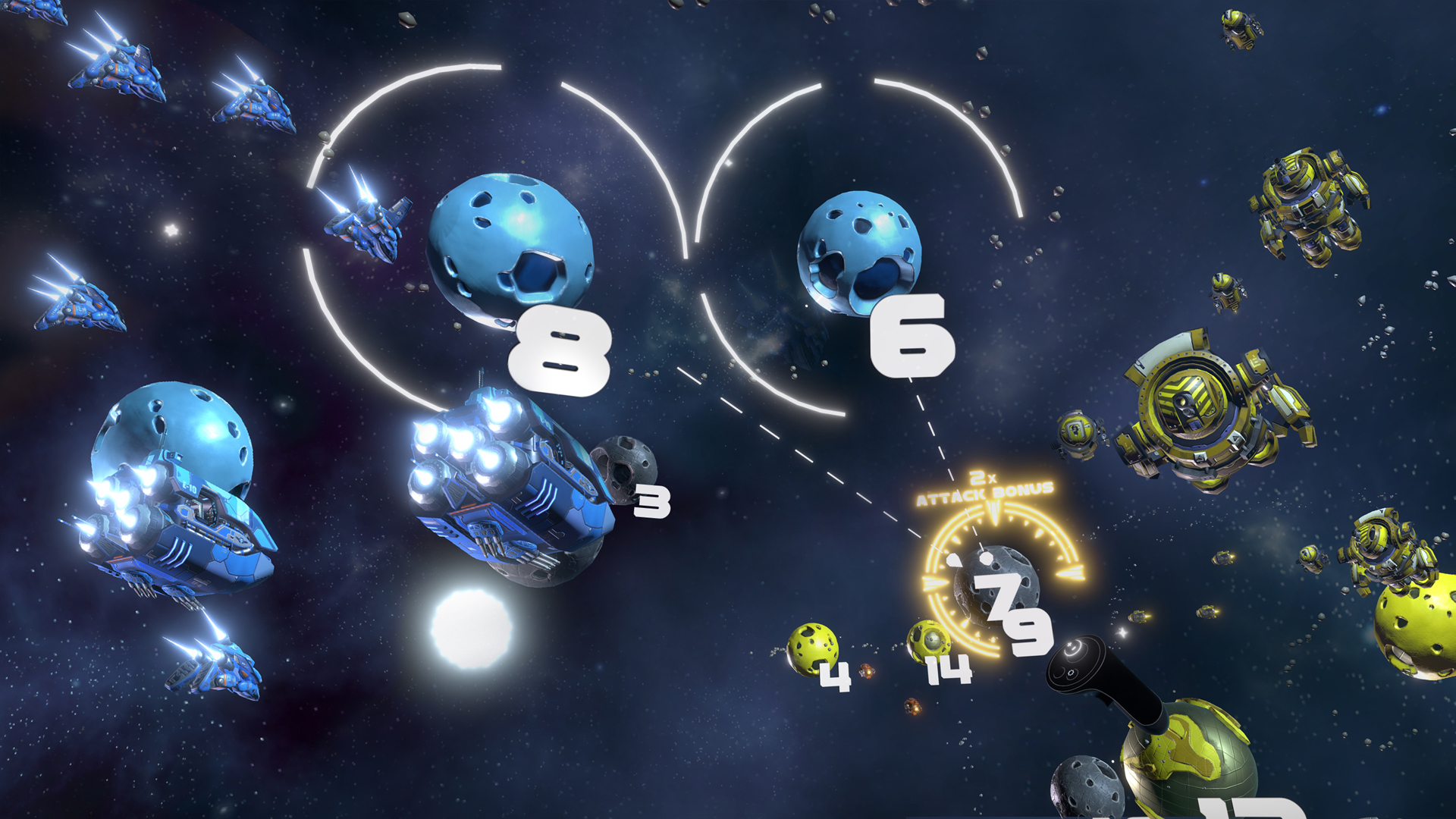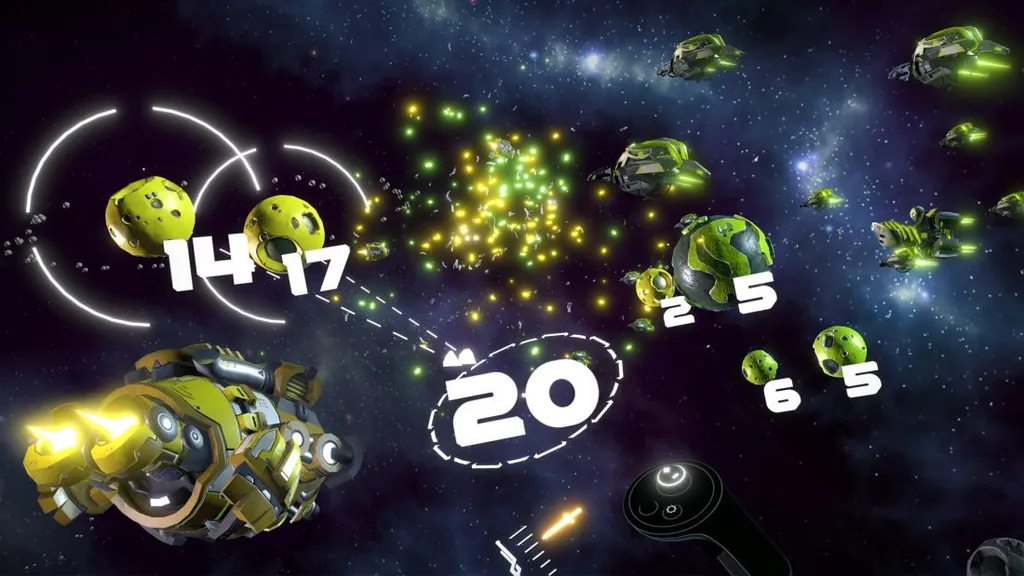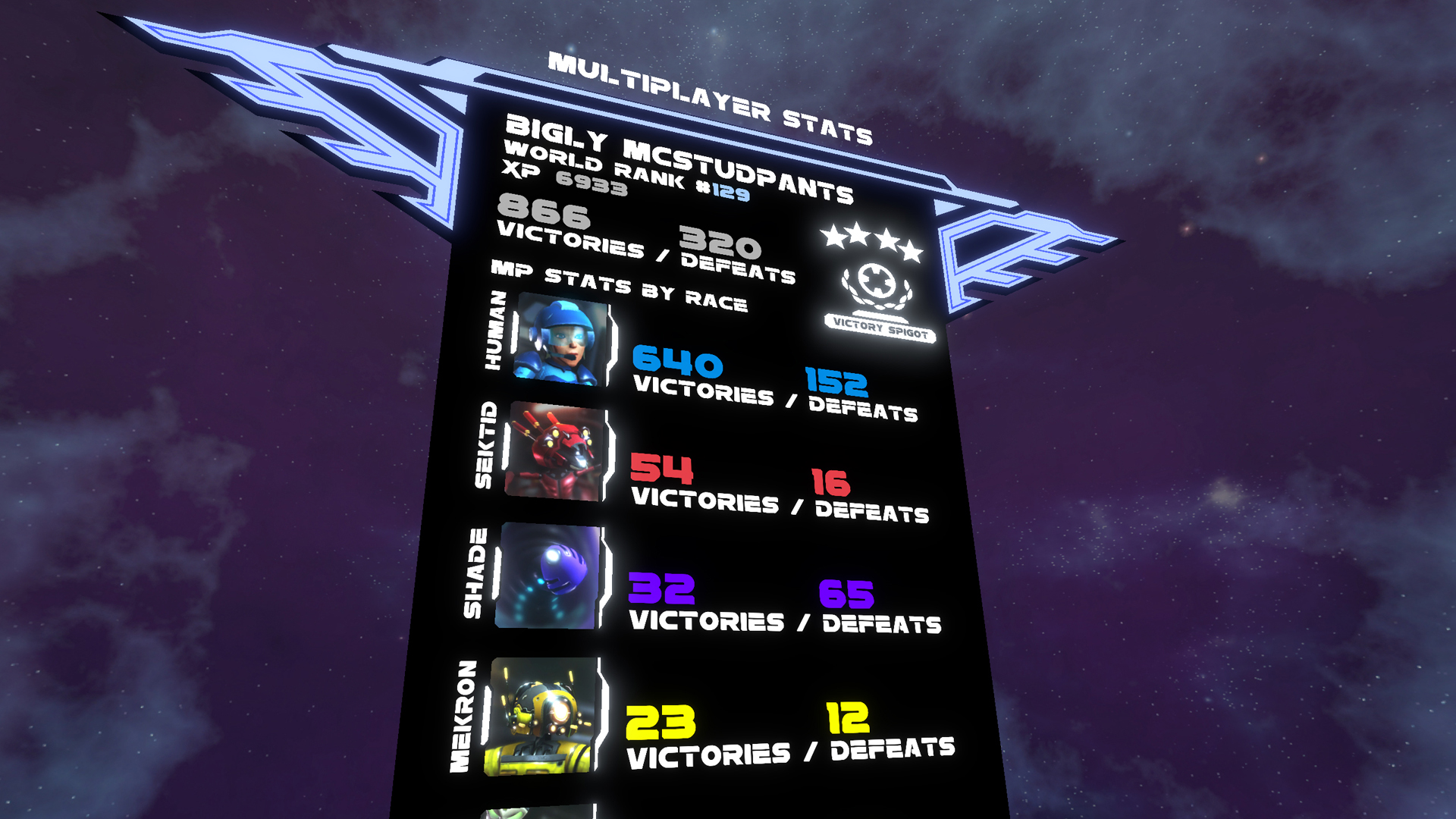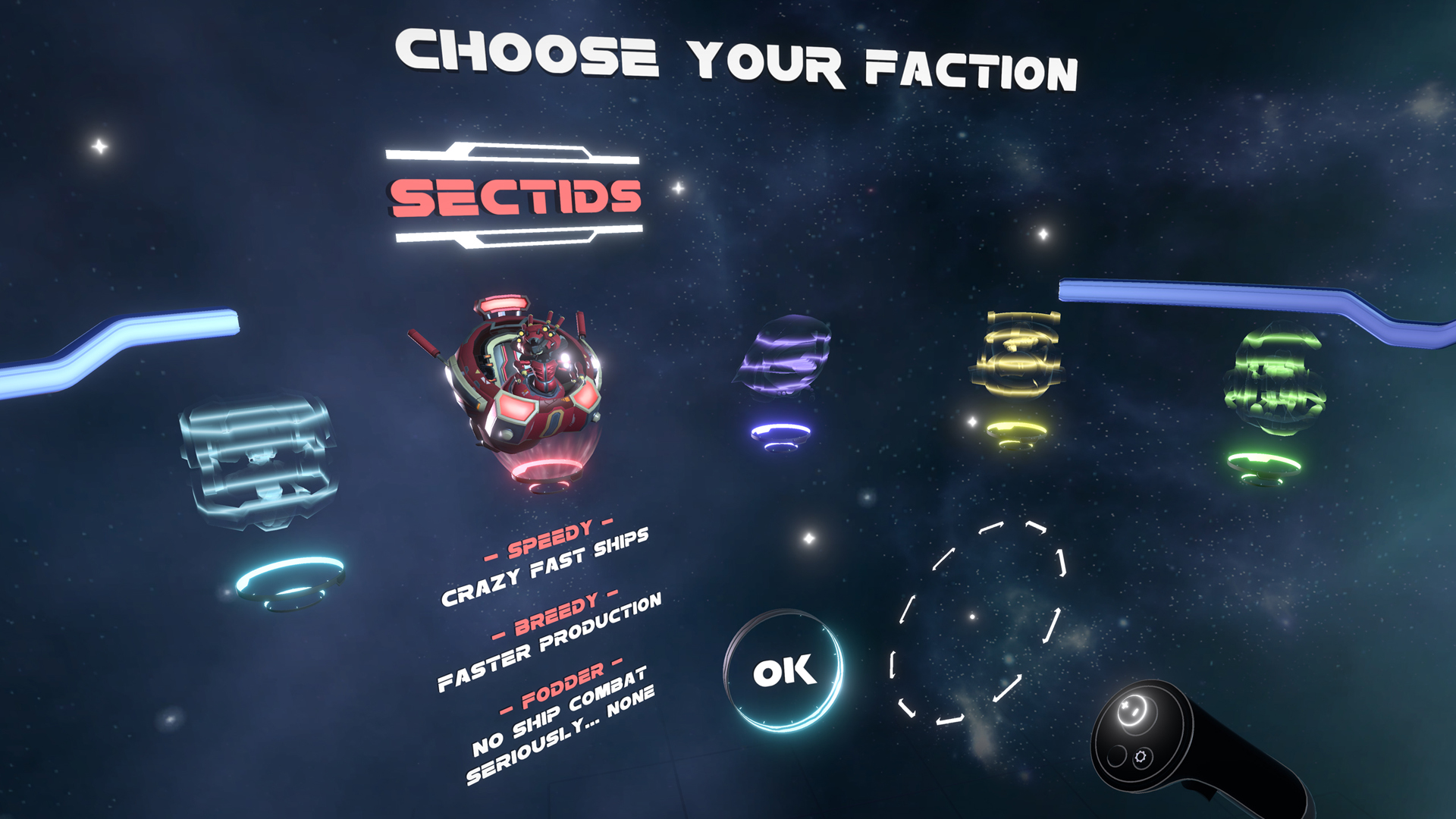Strategy games have a knack for just feeling really good in VR. Reaching out and grabbing units, directing them with your actual hands, and observing a battlefield from high above is a special kind of power. Until now, most of those wars had been waged on digital tabletop-sized zones, but now MoonStrike is taking things to outer space.
The 360-degree play space is reminiscent of Tactera, if only in design. Every map exists all around you during a match. You’ve got to physically get up, move around, and explore the levels to find all of the planets and send your ships into battle. It’s a clever and creative setup, but it lacks the depth and complexity needed to really make this one a worthy RTS addition.
One of the fundamental issues with MoonStrike is that there is just not enough to do. There’s only one single game mode to play in which you try and wipe out the two other opponents. After you pick a faction matchmaking starts. You can either wait for someone to join the match or just play against AI. That’s it.
Once the battle starts your units are collected at your main home planet. You reach out with your controller, select the planet, then use the analog stick or touch pad to assign how many ships you want to send out, and place your cursor over another planet. At the end of the day, that’s the entire gameplay loop. There is only one unit type, no upgrades, and zero in-game progression of any kind.
The catch with things in MoonStrike is that each planet will automatically generate new units over time. The bigger the planet, the faster it makes new units. Each faction has different bonuses and downsides too, such as yellow generating units the fastest, but also moving through the map the slowest. Purple units, on the other hand, are cloaked once they leave a planet so your enemies can’t see where you’re traveling.
Additionally, once you set a course for units, you can’t cancel it or reroute them. This is a little frustrating at times, but also forces you to plan ahead and predict your enemie’s movements. Since the maps are all in space in big 360-degree areas, the planets are constantly orbiting and moving around. Efficient movement is just as much about which planet you go to as it is when you set the path to minimize travel time.

Minimizing travel time is important because if two factions cross paths in space they’ll fight each other. It’s a basic numbers game though, similar to Risk or Civilization, in that the more units you have, the bigger advantage you have in the skirmish. The same goes for taking over planets.
If a planet has 20 units and you send 35 units at it, you’ll take it over with a few left over to occupy. Or if you send 10 units at a planet with 20 units, you’ll whittle it down but lose your units in the process.
Single game mode games can work, though, when done well, but there just isn’t enough going on in MoonStrike. What I’ve described is literally the entire game other than slight map variations, all of which are random and cannot be selected manually. Then there are the balance issues.
In every game I played, if I picked yellow, I won. The issue is that they produce units so much faster than everyone else that as long as you don’t get wiped out early on, it’s nearly impossible to lose. Their slow movement speed isn’t much of an issue when they’ve tripled their unit size back at the original planet before reaching their destination.
Similarly, the red faction (pictured above) is at a major disadvantage after the first few minutes of gameplay. Their ships are incredibly fast, which is helpful for taking out an opponent early to force a 1v1, but their ships can’t attack during travel. So unless you have a clean path to a planet, you’re just a sitting duck anytime you move units. That’s a significant disadvantage to overcome.
MoonStrike has a lot of good ideas, but it just feels like a small vertical slice of an otherwise much larger game. Without balanced factions, more game modes, and some type of way to upgrade units or progress somehow through the course of a match it gets old very quickly. I love the concept and creativity on display at a fundamental game mechanic level, but there just isn’t enough in the package to push it beyond bland, mediocrity. Especially in the face of options like Brass Tactics.
MoonStrike is currently available on Steam for Rift and Vive as well as on Oculus Home for $19.99 with a 15% launch discount. Check out these official review guidelines to find out more about our process.



























